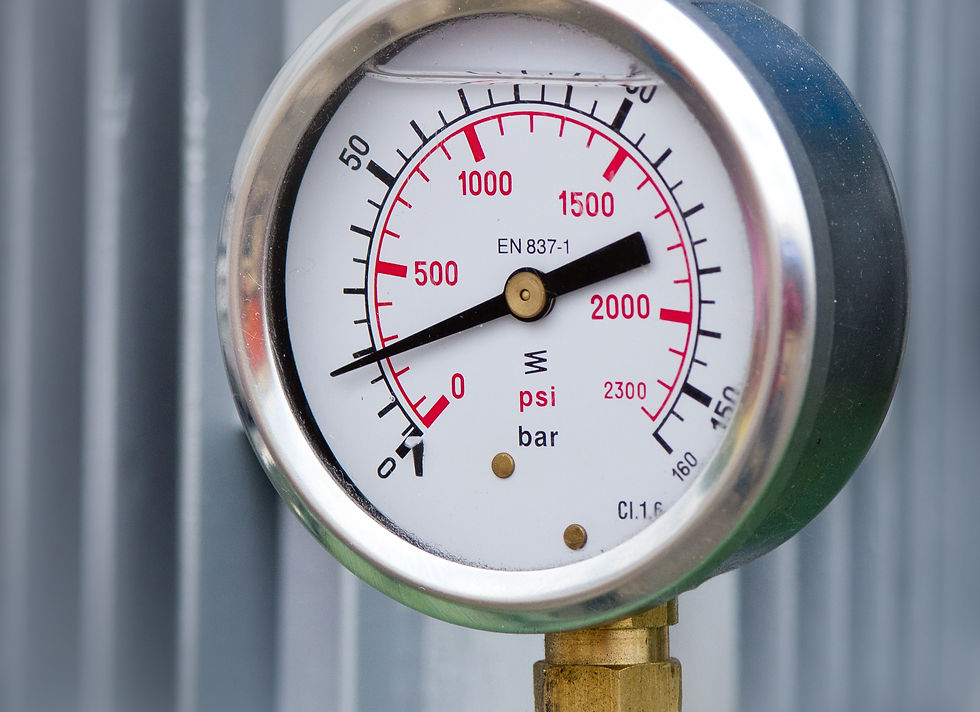NO PRESSURE RIGHT?
- Moran Sciamama-Saghiv
- Sep 26, 2023
- 3 min read
Updated: Oct 24, 2023
WRONG!

Actually, pressure all day long. Not just any type of pressure, mechanical pressure, lot and lots of mechanical pressure. Mechanical pressure is a physical force used by our body in multiple ways to support function, prevent injury, and more.
There are multiple versions available for different types of mechanical pressure, especially if we consider the diverse ways to change (increase/decrease) what forces are applied to. In some cases it is best to use surface area to calculate force, volume might be better sometimes, or length could be utilized. We will see different option, yet in all cases, the mechanical pressure is in the center of occurrences.
Advertisement
The general equation for mechanical pressure is force divided by surface area. Since this is a mathematical triangle, there are naturally three ways to increase the mechanical pressure and three ways to decrease the mechanical pressure. If you increase the force and decrease the surface area, pressure increases; If you decrease the force and increase the surface area, pressure decreases. Mechanical pressure can also be decreased based of a change to only one component by decreasing the force alone or increasing the surface area alone. Mechanical pressure can be increased based of a change to only one component by increasing the force alone or decreasing the surface area alone.
Sometimes the force causing the mechanical pressure is external, originating from outside of the body, organ, tissue etc. In such cases the greater the surface area the body can create, the lesser the chances of that force resulting in injury. Thus, the body's ability to increase surface areas acts as a defense mechanism. On the other hand, the same principle can help the body concentrate and direct forces in a certain direction.
As a pregnancy advances, more fluids are accumulated within the womb. If you replace the surface area part of the equation for mechanical pressure by volume, it is clear that the greater the volume (amount) of fluids in the womb, the less the forces that might hit the fetus and endanger it. In a similar way, adipose tissue (fat tissue) increases the surface area and also is great in dispersing forces, thus can also act as effective force and shock absorbers.
Our skeleton utilizes areas with multiple small bones that increase the overall surface area, allowing to disperse forces traveling through that anatomical area, reducing the chances of injury. We clearly see such structure as part of the wrist of the hand, and the foot. Indeed the ability to cause mechanical forces to move in multiple directions and through multiple different avenues, is used as a means to increase surface area and decrease the applied force in a certain point or location.
The ribcage is another structure built to encompass internal organs, yet also disperse mechanical forces moving through the body inwards and might injure tissue and organs. Since the ribs do not create one continuous surface, rather than have gaps in between, the forces must move through each rib separately and thus become multiple smaller forces moving in different directions.
The "S" shape like structure of the spinal column, is also meant to disperse forces traveling up and down the spinal column. Its curves increase the length and "break" the straight lines that forces tend to move in. In addition, forces moving up or down the spinal column, are always destined to be met by a structure that is meant to further disperse mechanical force or mechanical pressure. Moving downwards, the force will be met by the pelvic which itself is not one bone, but several bones, that increase the overall surface area, reducing the extent of force concentrated in one point/area.
Advertisement
Moving upwards, the force is met by the ribcage, scapula, and shoulder girdle, that continue to disperse the force into several different directions. Another smart way that the body absorbs mechanical forces by increasing the localize surface area, is the use of elastic materials and tissue such as fascia, skeletal muscles, pleural tissue, and more. Elastic materials and tissue, are capable of stretching, increasing their surface area, and in many cases, store the force as tension (another mechanical force).



Comments